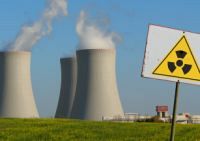

Two Belgian nuclear reactors are covered in cracks totalling over 16,000. The discovery has led to Jan Bens, Director-General of the Belgian nuclear regulator the Federal Agency for Nuclear Control (FANC), saying this could have huge implications for the global safety of the nuclear industry. There have been calls for inspections of all nuclear reactor vessels.
The cracks on the Belgian steel reactor pressure vessels, entirely unexpected, could be due to normal operation causing corrosion. This theory was put forward by material scientists, Professor Walter Bogaerts and Professor Digby MacDonald. Professor Bogaerts has stated "I am afraid that the corrosion aspects have been underestimated."
The discovery was made in 2012, and both reactors were shut down in 2014 for tests. The samples showed an "advanced embrittlement" of the steel, leading to further concerns.
The reactor's operator at the time, Electrabel, dismissed the cracks as a manufacturing issue as the most likely cause. The Federal Agency of Nuclear Control (FANC) agreed with Electrabel, however admitted "other factors" could have played a part.
Cedrec's take
Nuclear energy is a divisive subject. It is a clean energy, the output is quite substantial in terms of demand burden and it creates and sustains jobs at every site.
However, the detractors are highly significant. Nuclear energy is highly volatile, and must be kept in the strictest of, and most stringently tested, secure sites. To have over 16,000 cracks on two reactors (one of those reactors had over 13,000 of those cracks) is highly concerning. The biggest factor to add to the concern, is that there is no easily identifiable issue. Chernobyl was caused by human error, Fukushima a tsunami, and so on. With these cracks, which were caused, allegedly, by "everyday use" it is highly alarming.
A possible solution is difficult and expensive to execute.
First, the cause must be absolutely solved. The vague "other causes" must be identified, highlighted and considered.
Then, reactors will most likely have to undergo new designs or the shelf-life of such plants reconsidered. At present, a typical nuclear power plant is operable for around 40 years. With these cracks, apparently caused by corrosion, perhaps shorter operable lifetimes are the answer.
Whatever the cause, and whatever the solution, it is better to be discovered now, as opposed to after an accident, in which the reason would be deduced in an inquiry.